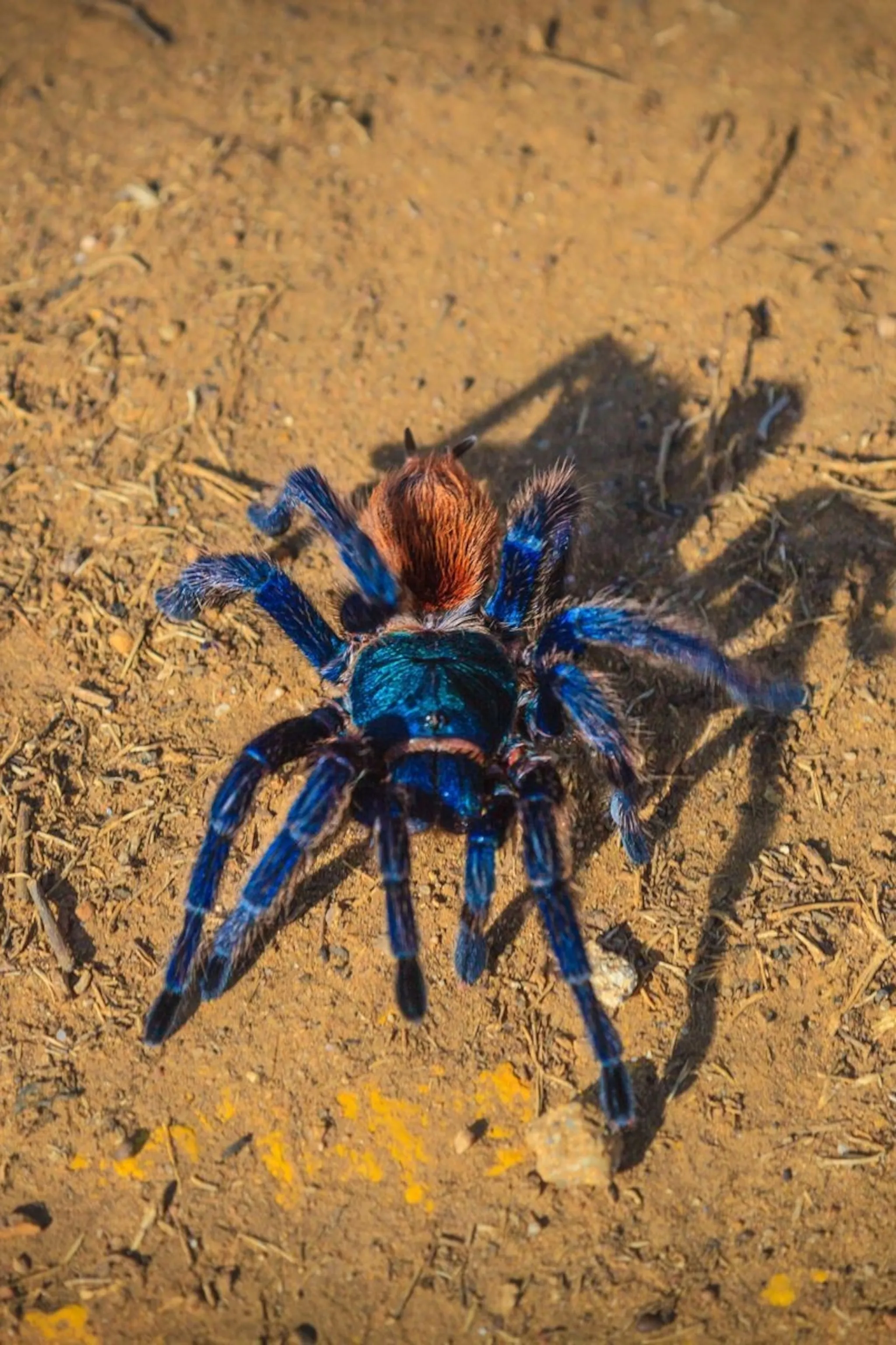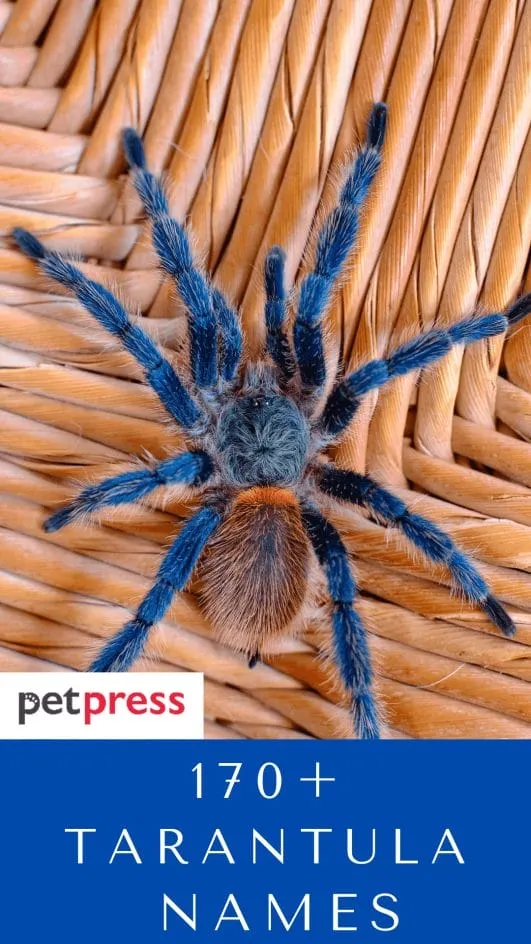Common Tarantula Names 5 Essential Facts
The world of tarantulas, with their hairy legs and impressive size, can be a fascinating subject for both arachnid enthusiasts and casual observers. However, diving into the details of these creatures can be tricky, and one area that often piques interest is their naming conventions. While scientists use a standardized system of scientific names, tarantulas also have common names that make them easier to identify and talk about. This article explores 5 essential facts about common tarantula names, offering insights into why these names exist, how they work, and the role they play in understanding these amazing creatures. Understanding the naming conventions gives a better approach when dealing with these arachnids.
Why Do Tarantulas Have Common Names
Tarantulas, like many other animals, have both scientific and common names. The scientific names, based on the Linnaean taxonomy, are universal and provide a precise classification of species. Common names, on the other hand, are informal and vary depending on the region and the people using them. These names arise organically, often evolving from local observations, physical characteristics, or behavioral traits. The presence of common names reflects a need for easier communication among enthusiasts and pet owners. These names enable those unfamiliar with scientific nomenclature to discuss, identify, and appreciate tarantulas without relying on complex Latin names. It helps when talking about species and types, making the information more accessible to a broader audience.
The Role of Common Names

Common names serve a crucial function in bridging the gap between the scientific community and the general public. For tarantula owners and hobbyists, they provide a user-friendly way to refer to different species. This is particularly helpful for new owners who might not be familiar with scientific names. The role of common names also extends to educational contexts, where they simplify the process of teaching about tarantulas. Common names also contribute to the cultural significance of tarantulas. In many regions, these names reflect local folklore, stories, and the way people perceive these creatures. They create a sense of connection between people and tarantulas, fostering interest and appreciation.
Scientific vs Common Names
Understanding the differences between scientific and common names is essential when learning about tarantulas. Scientific names are crucial for precise identification and communication within the scientific community. These names follow a standardized system, often including the genus and species of the tarantula. On the other hand, common names are less structured and may vary. A single tarantula species can have several common names, depending on where you are. For example, the common name for a species might change from one country to another. This variability is the price of the accessibility that common names offer. While scientific names provide clarity, common names contribute to the accessibility of information and build an interest in the arachnid world.
Fact 1 Familiarity & Accessibility
One of the primary reasons for common names is to make tarantulas more accessible. Scientific names can be daunting for those who are not biology experts. Common names simplify the process, enabling people to learn about and appreciate tarantulas without needing to memorize complex terminology. For example, the common name ‘Mexican Red Knee’ is far easier to remember than Brachypelma hamorii. The use of everyday language makes it easier for enthusiasts to communicate, share information, and discuss the fascinating world of tarantulas. This also encourages a broader understanding and love for these creatures. The accessibility provided by common names plays a vital role in the popularity of tarantulas as pets and subjects of study.
Making Tarantulas Easier to Discuss

Common names enable tarantula enthusiasts to engage in discussions, share experiences, and seek advice from others. Whether in online forums, pet stores, or informal gatherings, these names serve as a common ground for communication. The ease of use encourages more people to participate and share their insights. For instance, talking about the ‘Chilean Rose’ tarantula is simpler than using its scientific name, Grammostola rosea. This simplicity breaks down barriers and allows more people to join the conversation. This ease of communication strengthens the tarantula community and promotes a deeper understanding of the species, their care, and their natural habits.
Helping New Tarantula Owners
New tarantula owners benefit significantly from the use of common names. Navigating the world of tarantula keeping can be challenging, with various species, care requirements, and potential health concerns. Common names make it easier for beginners to identify their tarantulas and learn about their specific needs. Many online resources, care guides, and pet stores use common names, providing a straightforward way for new owners to access the information they need. This user-friendly approach minimizes the learning curve and helps new owners build confidence in caring for their pets. By making information accessible, common names help to foster responsible tarantula ownership and promote the well-being of these creatures.
Fact 2 Geographic Variations
Common names often reflect regional differences, and the names of tarantulas can vary widely depending on where you are. This variation results from local traditions, environmental factors, and the way different cultures interact with these creatures. This diversity shows how language and local understanding can shape the names and create a rich tapestry of tarantula identification across the globe. This geographic variance can sometimes lead to confusion. However, they are valuable reflections of the unique relationship that people have with tarantulas in different parts of the world. It provides a glimpse into the cultural and environmental context in which tarantulas are found.
Regional Differences in Names

In different regions, tarantulas may have distinct common names reflecting local dialects or languages. These names often originate from everyday observations and interactions with the tarantulas found in a specific area. For example, a tarantula might be called a ‘wolf spider’ in one region because of its hunting behavior and the areas where it lives. In another area, it may be known by a descriptive name related to its size, appearance, or the environment where it is found. The variation underscores the intimate connection between the local people and their surrounding natural world. This diversity highlights the rich cultural and linguistic heritage associated with these creatures.
Examples of Geographic Naming
Consider the tarantula species Grammostola pulchra, which is sometimes called the ‘Brazilian Black’ tarantula. This name highlights its origin. Many other examples are found around the world, with names reflecting their geographic location or the region where they are commonly found. In North America, species are often named based on their origin, such as the ‘Texas Brown’ or ‘Arizona Blonde’. Understanding these regional differences helps enthusiasts connect with tarantulas and the environments where they live. It emphasizes the need for more localized understanding when discussing these fascinating spiders. Geographic naming also tells a story of the interactions between tarantulas and the human communities.
Fact 3 Physical Characteristics and Names
Physical characteristics greatly influence how tarantulas get their common names. Features like color, size, and distinctive markings play a key role in identifying and naming different species. These names are often descriptive, providing an immediate visual clue about the tarantula’s appearance. This approach can make the naming process simpler for the tarantula owners. These names help distinguish various species and make it easier to identify them. For instance, the ‘Goliath Birdeater’ is known for its impressive size. Color is a major factor.
How Appearance Influences Naming

The vivid colors and unique markings of tarantulas often provide inspiration for their names. The ‘Mexican Red Knee’ tarantula is named for the striking red bands on its legs. Other species are named after their general color. When the tarantula has striking colors, such as blue, green, or gold, it becomes easier for people to identify them. It is a direct way of describing the appearance of the tarantulas, making them easier to recognize and remember.
Examples of Appearance-Based Names
Numerous tarantulas have names related to their physical features. The ‘Pinktoe’ tarantulas get their name from the pink coloration on the tips of their feet. The ‘Blonde’ tarantulas, are named for their light brown hue. Size is also a factor. ‘Goliath Birdeater’ highlights its large size and predatory behavior, which is how people understand and interact with them. The association of names with physical characteristics helps create an immediate connection between the species and its appearance. This can also help when identifying them.
Fact 4 Names from Behavior
The behavior of tarantulas, including their hunting style, temperament, and habitat preferences, is another key factor that influences their common names. Names related to behavior reflect how tarantulas interact with their surroundings and their unique characteristics. These names reveal insights into their lives. For example, the ‘Huntsman’ spider, a type of tarantula, is known for its active hunting habits, which is also reflected in the name. These behavioral names make it easy for people to understand the tarantulas.
Understanding Tarantula Behavior

Understanding tarantula behavior is key to appreciating how their names are derived. Some tarantulas are known for their calm temperaments, while others can be more defensive. Hunting strategies also vary greatly. Some tarantulas are active hunters, while others are ambush predators. Knowledge of these behaviors helps enthusiasts to understand the naming. This can provide a broader understanding of how these creatures live.
Behavioral Names Examples
Examples of names related to behavior include ‘Huntsman’ and ‘Birdeater’, reflecting their hunting habits and dietary preferences. The ‘Avicularia’ genus is known for its arboreal lifestyle, which means they live in trees. ‘Huntsman’ spiders are known for their hunting techniques. Understanding these names helps to connect people with the actions of the tarantulas. It promotes a richer understanding of their place in the ecosystem.
Fact 5 Popularity and Trends
The common names of tarantulas evolve and adapt over time, and popular names also reflect current trends and preferences within the tarantula community. These trends can stem from new discoveries, increased media attention, or evolving cultural perceptions of tarantulas. These names reflect the changing nature of how people interact with and think about these creatures. The names of the tarantulas can change over time.
Common Names Evolution

Common names are not fixed. They can change as new information is gathered about tarantulas. Also, as new species are identified, new names are needed. Also, old names can fade or be replaced by more widely accepted terms. This evolution is a natural part of language, reflecting the changing knowledge. For example, as more people become aware of the ‘Mexican Red Knee’ tarantula, it has become one of the more popular names.
Trending Names
Certain tarantula names gain popularity based on factors such as aesthetic appeal, ease of pronunciation, or the tarantula’s distinctive features. The popularity of a particular tarantula species in the pet trade can also affect its common name. The trends may also vary over time and are often influenced by the popularity of certain species in the pet trade. Social media and online communities can also play a role. As enthusiasts share their experiences and knowledge, some names might gain more traction.
In conclusion, common names play an essential role in the world of tarantulas, enabling easier identification. Common names bridge the gap between scientific classification and the general public. These names make it easier to talk about tarantulas, and help to foster a deeper appreciation for these fascinating creatures. By knowing the origin and meaning of these names, we gain insights into the behaviors, and regional differences. So next time you hear the name ‘Mexican Red Knee’ or ‘Brazilian Black’, you will have a deeper insight into the wonderful world of tarantulas.
